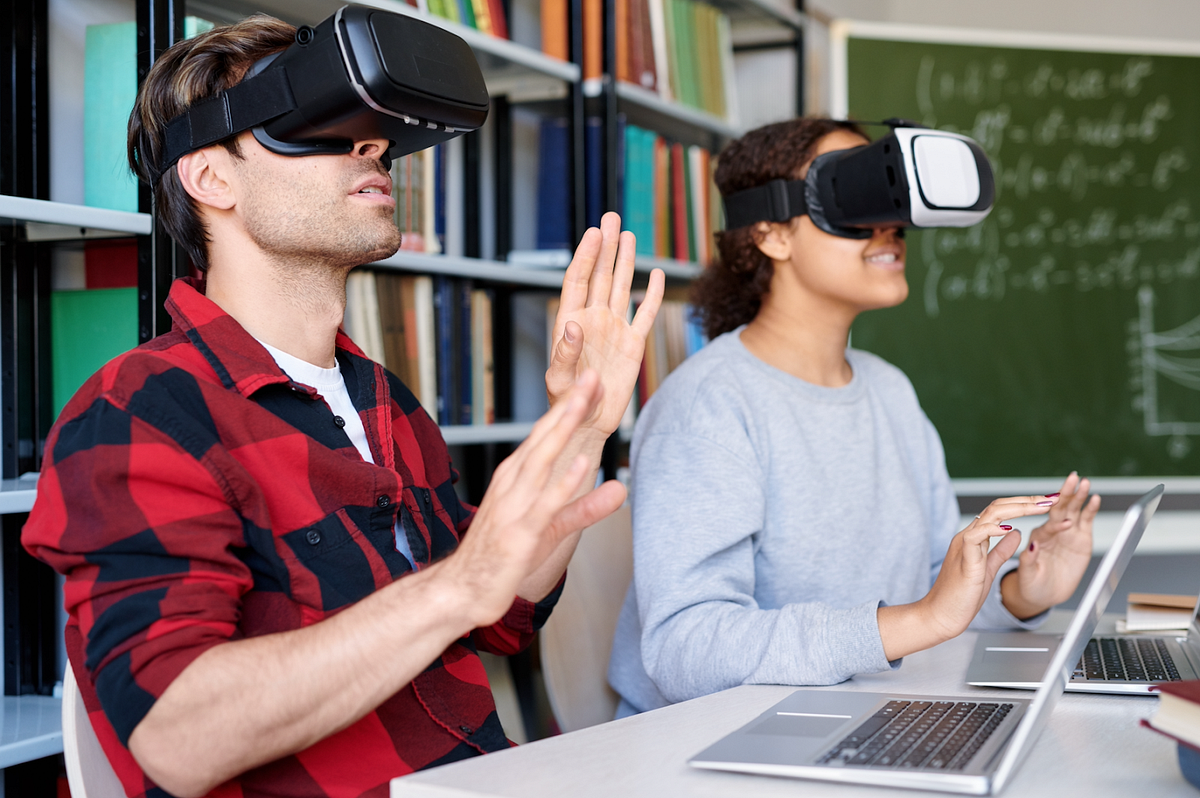Introduction
Technology has reshaped almost every corner of our world, and education is no exception. Imagine the traditional classroom, filled with desks, chalkboards, and heavy textbooks. Now imagine a classroom where learning happens at each student’s own pace, lessons come to life through interactive screens, and teachers gain insights from real-time data on student performance. This is the world of technology in education—a world where learning knows no boundaries, and students are encouraged to dive into knowledge with both creativity and curiosity.
Evolution of Technology in Education
Before diving into the specifics, it’s worth looking at how technology has evolved in educational spaces. From the basic introduction of calculators and projectors to the internet transforming information accessibility, technology has consistently changed the learning landscape. Today, we see smartboards, tablets, and e-learning platforms revolutionizing the classroom, providing endless possibilities for students and educators alike.
Understanding the Benefits of Technology in Education
Technology, when applied thoughtfully, can significantly enhance the learning experience. First, it opens doors to countless resources online, from e-books to educational videos, making information easily accessible to students regardless of their geographic location. Moreover, the interactive nature of many digital tools helps keep students engaged, sparking curiosity and encouraging active participation in their learning journey.
The Role of E-Learning Platforms
E-learning platforms, like Coursera, Khan Academy, and Udacity, have fundamentally changed how people learn. By offering structured courses on a wide range of topics, these platforms have democratized education, allowing people worldwide to learn new skills and knowledge. For students and teachers, e-learning platforms are a treasure trove of information, helping educators to supplement their teaching with comprehensive materials while giving students the freedom to explore topics at their own pace.
Interactive Digital Classrooms
Imagine a classroom where every student can participate actively, even those who are typically more reserved. Tools like Google Classroom, Microsoft Teams, and Zoom make this possible by creating interactive digital spaces where students can ask questions, join discussions, and collaborate with their peers. This kind of engagement transforms learning into a two-way street, allowing students to feel more connected and invested in their education.
Personalized Learning Experiences
One of the significant advantages of technology in education is that it allows for personalized learning. Rather than following a one-size-fits-all approach, technology helps educators tailor lessons to fit each student’s needs. Tools like adaptive learning software analyze a student’s strengths and weaknesses, adjusting the difficulty and pace accordingly. This kind of personalization helps students focus on areas where they need the most improvement.
Gamification in Education
Who said learning can’t be fun? Gamification integrates game-like elements, such as points, levels, and badges, into educational activities to make learning more engaging. Platforms like Duolingo have made language learning a fun experience by incorporating these elements, turning what could be a mundane task into a game. By creating challenges and rewards, gamification keeps students motivated and makes the learning process feel less like a chore.
AI and Machine Learning in Education
Artificial Intelligence (AI) and Machine Learning (ML) are making waves in education by enabling automated grading, personalized study schedules, and even predictive analytics. Imagine a tool that can analyze a student’s performance and predict potential challenges they may face in future topics. AI-driven tools like these help educators provide targeted support, fostering better academic outcomes for students.
Data-Driven Insights for Educators
For teachers, data is invaluable. With technology, educators can collect and analyze data on student performance, behavior, and engagement. Tools like Learning Management Systems (LMS) provide detailed analytics that teachers can use to identify trends and tailor their teaching methods accordingly. Data-driven insights help teachers make informed decisions, which ultimately enhances the quality of education.
Virtual Reality and Augmented Reality in Education
Virtual Reality (VR) and Augmented Reality (AR) bring lessons to life in ways that were once the stuff of science fiction. Imagine a history lesson where students can walk through ancient civilizations or a biology class where they can explore the human body in 3D. VR and AR create immersive learning experiences that make complex concepts more understandable and memorable.
Remote Learning and Hybrid Classrooms
The rise of remote learning has changed the education landscape, particularly during the COVID-19 pandemic. Technologies like Zoom, Google Meet, and other video conferencing tools have made it possible for learning to continue even when students are not physically present. Hybrid classrooms, combining in-person and online learning, have emerged as a flexible model, accommodating different learning styles and improving accessibility for all students.
Technology for Enhanced Student Assessment
Traditional assessments often fail to capture the full spectrum of a student’s abilities. With technology, educators can go beyond standard tests and exams to measure student performance through projects, presentations, and real-time assessments. Digital assessment tools can evaluate a range of skills, providing a more comprehensive picture of each student’s progress.
Overcoming Challenges in Tech-Driven Education
While the benefits of technology in education are extensive, it’s not without its challenges. Common issues include lack of access to devices, varying levels of digital literacy among students and teachers, and concerns about screen time. However, solutions are emerging, including funding for school technology, digital literacy programs, and implementing balanced tech policies to ensure students’ well-being.
The Future of Technology in Education
As technology continues to evolve, the future of education is filled with exciting possibilities. From AI-powered tutors to immersive VR experiences, the next generation of students will have access to tools we can only dream of today. As we move forward, the focus will remain on using technology to foster creativity, critical thinking, and a lifelong love for learning.
Conclusion
Technology has already proven its worth in the classroom, creating countless opportunities for students and teachers alike. By embracing the advancements that technology offers, we can build an education system that not only imparts knowledge but also cultivates curiosity and a passion for lifelong learning. As the journey continues, the role of technology in education will only grow, shaping the minds of future generations.
FAQs
1. How does technology make education more accessible?
Technology allows students from all backgrounds to access quality education, breaking down geographical and financial barriers through online resources, e-learning platforms, and virtual classrooms.
2. Can technology replace teachers in the future?
While technology can enhance learning, it can’t replace the unique support, guidance, and empathy teachers bring to the classroom. Instead, it complements teachers by helping them reach more students more effectively.
3. What are some popular educational tools for teachers?
Some popular tools include Google Classroom, Khan Academy, Microsoft Teams, and interactive tools like Kahoot for engaging quizzes.
4. How can schools implement technology affordably?
Schools can adopt a phased approach, starting with free or low-cost tools, applying for technology grants, and promoting BYOD (Bring Your Own Device) policies to make technology implementation more affordable.
5. What skills should students learn to excel in a tech-based world?
Digital literacy, critical thinking, adaptability, and collaborative skills are essential for students to succeed in a technology-driven educational landscape.


